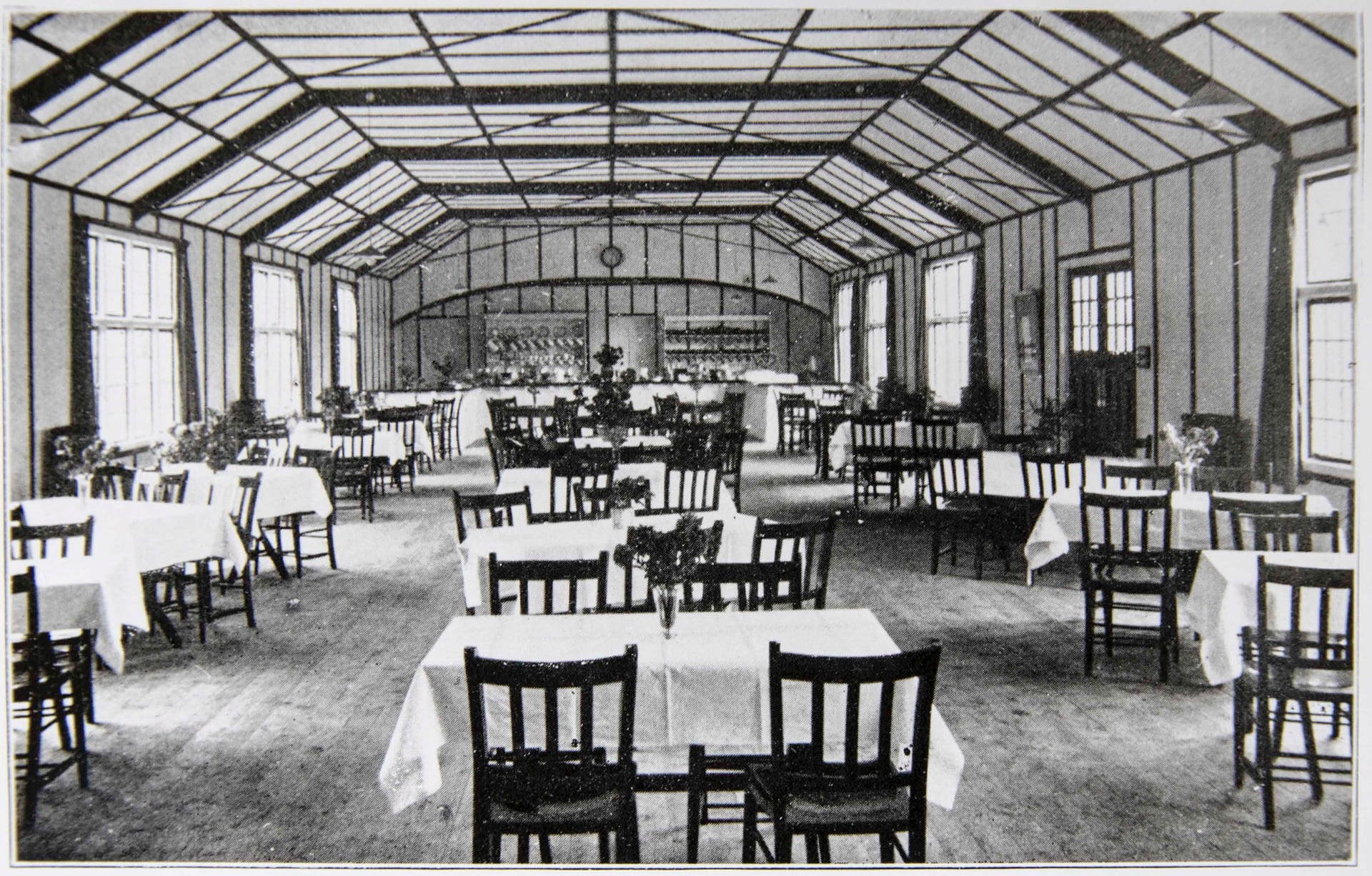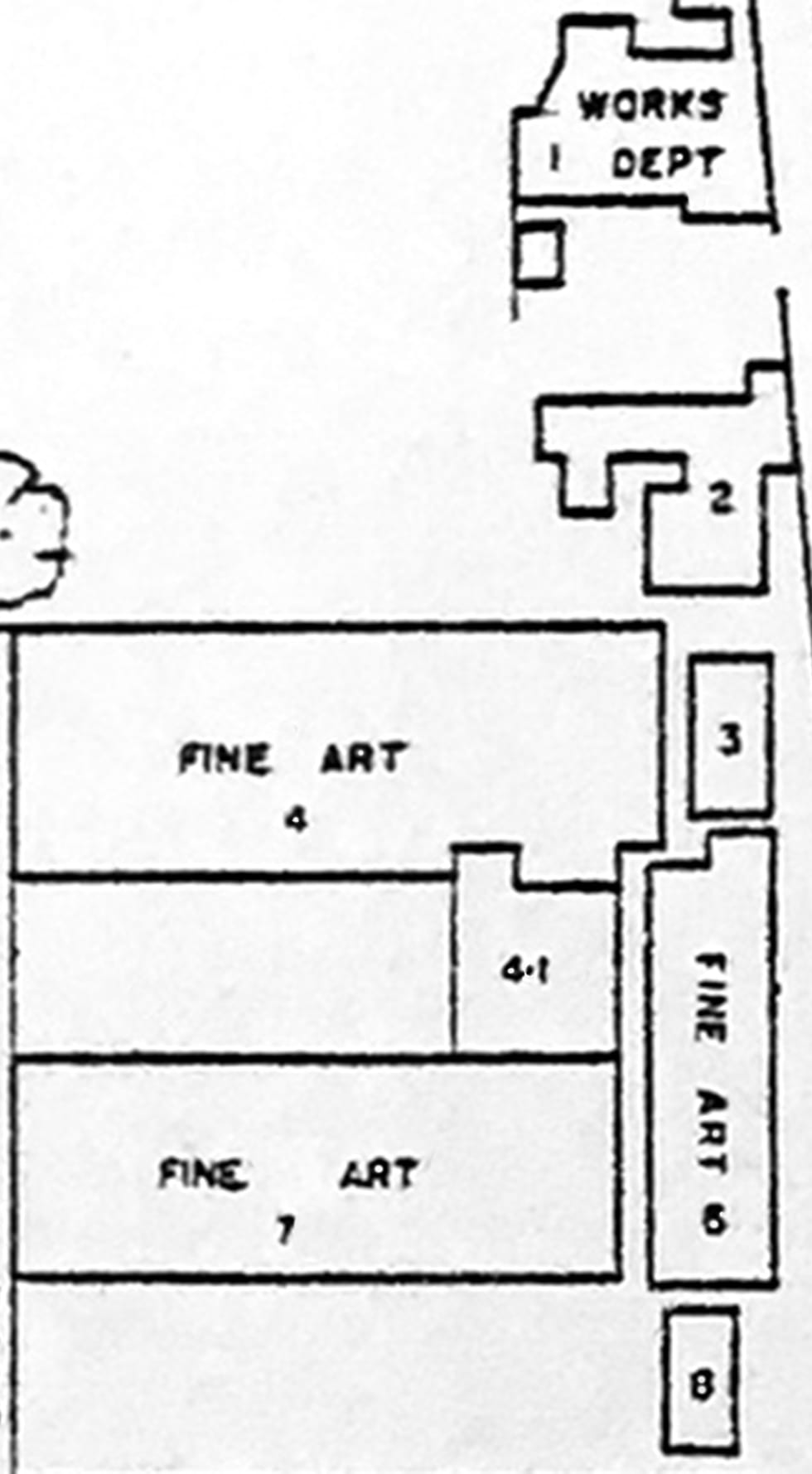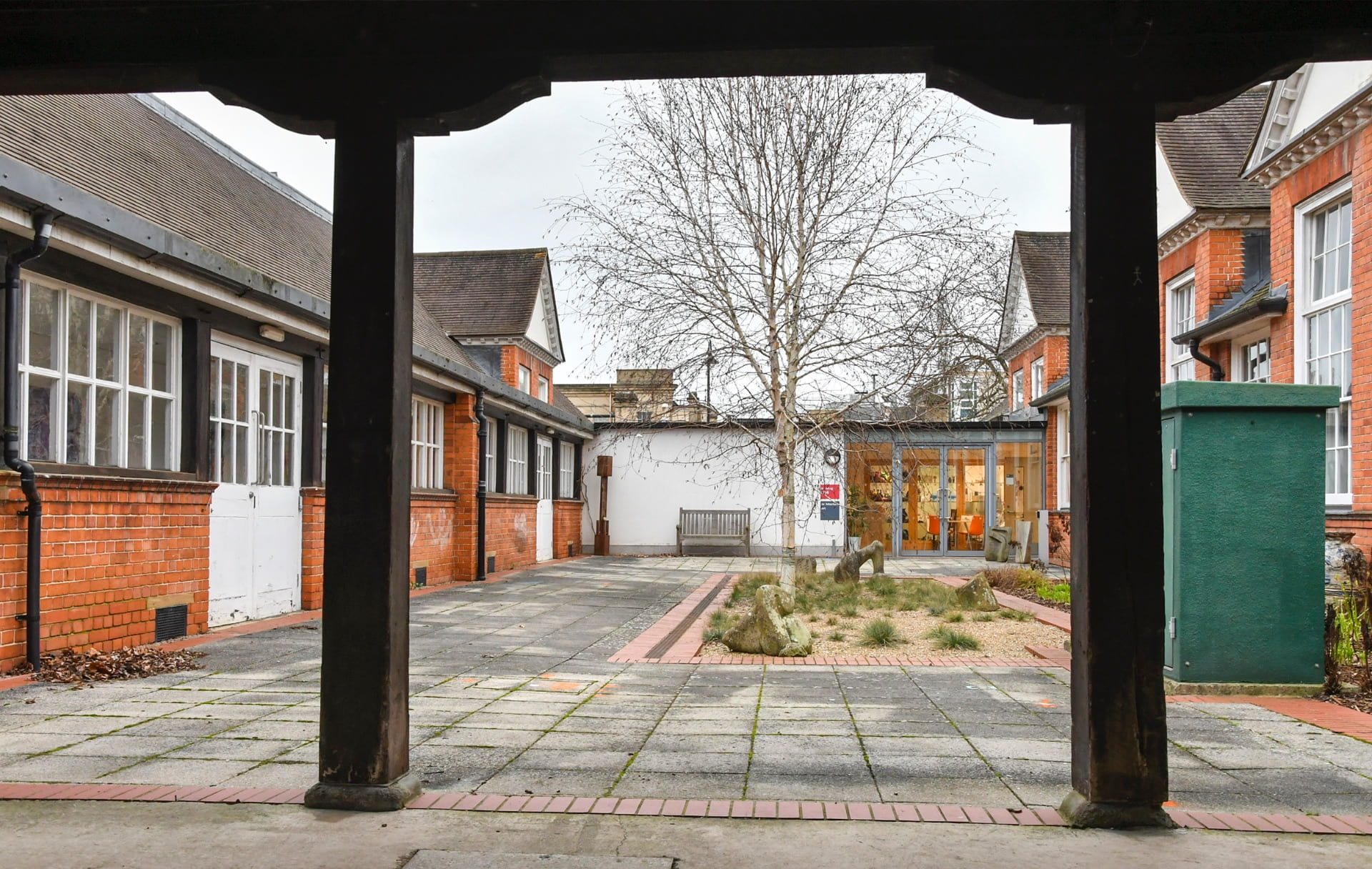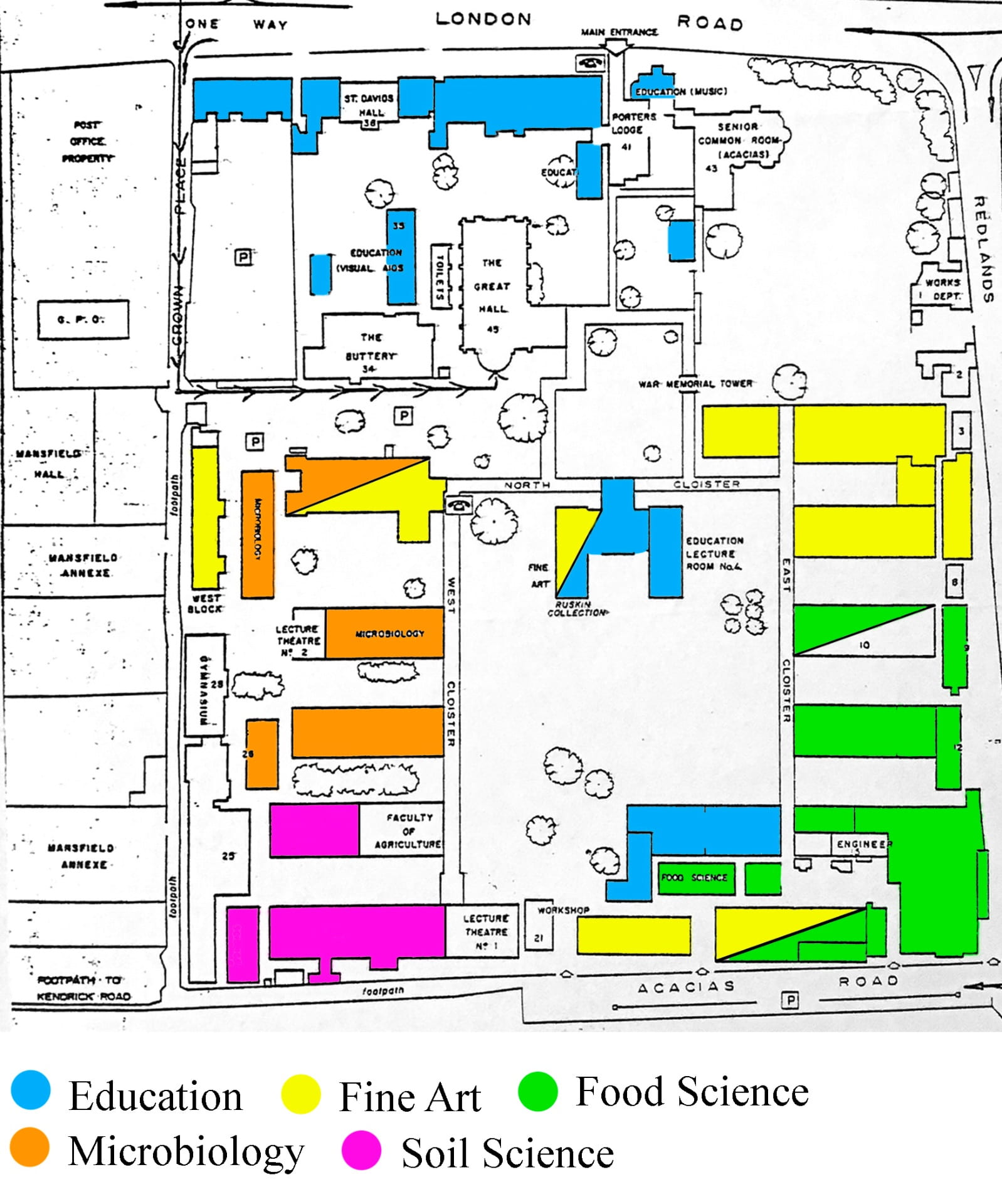Few posts on this blog would have been possible without Reading University’s Special Collections and the assistance of its ever-helpful team of archivists and Reading Room assistants.
Occasionally, among the wealth of items in the collections something particularly interesting and unexpected turns up such as a sheaf of original signed letters by French author and Nobel laureate André Gide (1869-1951), or an unsigned copy of a letter from the composer Richard Strauss.
The latter is the topic of this post – Strauss’s letter is contained in a folder of theatre and concert programmes in the collection of Josephine Pullein-Thompson (1924-2014) who, together with her twin sisters Christine and Diana, was a children’s author best known for adventure stories featuring horses and ponies.
Contents of Folder MS 5120/116
Among Josephine’s many concert memorabilia there is a programme for the Vienna State Opera’s performances at the Theater an der Wien1 in Vienna. The item is in three parts:
1. The programme itself which covers the whole 1950-51 concert season (there would have been a separate insert for each performance). It contains notifications of future events, photographs of a previous production of ‘Der Troubadour’ (Verdi’s ‘Il Travatore’), advertisements and a three-page extract from the libretto of Richard Strauss’s ‘Capriccio’. A handwritten note on the front cover reads: ‘On holiday with Christine’. Presumably this is Christine Pullein-Thompson, Josephine’s sister. We don’t know whether Christine’s holiday companion was her twin sister Diana or their older sister Josephine in whose archive the item was found. It is possible that it was sent to Josephine by Diana.

2. An insert for the performance of Wagner’s ‘Lohengrin’ that took place on 7 June 1951. It contains the cast list and there is a synopsis of the plot on the back.

3. A copy of an unsigned letter from Richard Strauss to the conductor Karl Böhm. The address is simply ‘Garmisch’ and the date 3 June 1942.

It is not clear why a letter written in 1942 should accompany a theatre programme from 1951. A closer examination of both, however, reveals some common ground.
Content of the Letter
Strauss addresses Böhm as ‘Dear Friend’. He says he has no objection to Böhm staging ‘Capriccio’ in Dresden. In fact, he is all in favour of it. As far as a performance in Vienna is concerned, he would prefer to wait until the Theater an der Wien had reopened. He regarded this venue as the ideal place to stage operas such as ‘Capriccio’ and ‘Intermezzo’ rather than the Vienna State Opera House which was too big to enable an intimate understanding of the text. He relates this to Böhm’s anticipated move to the Vienna State Opera.
Strauss suggests that during the next winter, when Böhm would be back in Vienna, he should start working on Strauss’s ‘Die Frau ohne Schatten’ [‘The Woman without a Shadow’] which was in urgent need of revival.
He says he will be in Berlin from 10 June onwards and hopes to have the pleasure of seeing Böhm at the premiere of a new production of Strauss’s three-act opera ‘Guntram’, on the 13th.
Some Context
-
-
- Dr Karl Böhm (1894-1981) was regarded as a member of a golden age of German conductors that included, among others, Wilhelm Furtwängler, Bruno Walter and Otto Klemperer. Böhm was a devotee of Strauss and his works, and had conducted the premieres of ‘Die schweigsame Frau’ [‘The Silent Woman’] in 1935 and ‘Daphne’ in 1938, which Strauss had dedicated to him. Eventually Böhm was to conduct ‘Capriccio’ in Zurich in 1944 and in Salzburg in 1950. At the time of Strauss’s letter to him he was Director of Music at the Dresden State Opera.
- ‘Capriccio’ was Strauss’s final opera, completed several weeks after his letter to Böhm, and first performed in Munich in October 1942. It was produced by Rudolf Hartmann (mentioned in Strauss’s letter in relation to ‘Die Frau ohne Schatten’) and conducted by the opera’s main librettist, Clemens Krauss. The premiere was sponsored by Joseph Goebbels, the Reich’s Minister of Propaganda. There is an irony here in that the original idea for ‘Capriccio’ had come from the Jewish author and librettist Stefan Zweig – their collaboration on ‘Die schweigsame Frau’ had previously brought Strauss into conflict with the authorities.2
- The sender’s address is simply stated to be Garmisch. Strauss would have been writing from his spacious and secluded family villa in Garmisch-Patenkirchen, built by the composer during the first decade of the 20th Century, and at least partially funded by the success of ‘Salome’, a one-act opera first performed in 1905. He occupied it in 1908 and the villa became his alpine sanctuary from which he had easy access to Munich, Salzburg and Vienna. It was here that Richard Strauss and Clemens Krauss worked on the libretto of ‘Capriccio’.
- ‘Guntram‘ was Strauss’s first opera, first performed in 1894 and revised in 1940 because of its lack of popularity.
Common Ground between the Letter and the Programme
It is clear from the above that there are two areas of overlap: the opera house itself and ‘Capriccio’.
As far as the opera house is concerned, the Theater an der Wien (mentioned in Strauss’s letter) was also the venue for Wagner’s ‘Lohengrin’ that the Pullein-Thompson sisters must have attended in 1951. Nevertheless, it is worth noting that, whereas in 1942 Vienna was blessed with both the Theater an der Wien and the Wiener Staatsoper (also mentioned in the letter), the latter had been partially destroyed by allied bombing in 1945, and during the 1950-51 season the State Opera was still being temporarily housed in the Theater an der Wien.
With regard to ‘Capriccio’, the opera is both the main topic of the letter as well as providing the programme with its lengthy quotation. The opera’s English subtitle is ‘A Conversation Piece for Music’, and its theme is whether Music or Poetry is supreme among the arts. The tension between the two is personified in an 18th-century French countess who is unable to decide between two suitors: a musician and a poet.
The importance of the audience being able to follow the arguments put forth in the dialogue made the Theater an der Wien, with its more intimate atmosphere, a more appropriate venue. The necessity of this was made clear in a preface to the opera dated April 1942, in which Strauss advised conductors and producers on rehearsal techniques that focused on clear diction.
Why was the extract from ‘Capriccio’ included in the theatre programme?
There are at least three reasons why the extract was appropriate for the programme of the 1951-52 season in Vienna: the success of ‘Capriccio’ and the popularity of its composer, the opera’s lack of any political overtones or propaganda, and the content of the extract itself.
The premiere of the opera in 1942 received approval from both critics and public. It was described as one ‘of the most successful novelties of the period’ (Levi, 1994, p. 189); the music was ‘light, colourful, and cheery, playfully ironic and uplifting’ (Kater, 2000, 172); it was ‘a masterpiece’, one of the few works of any quality that was produced during the war years – ‘the eloquence and fluency of [Strauss’s] work was extraordinary’ (Boyden, 1999, pp. 339-40); furthermore, ‘Capriccio is a glorious achievement, a testament to the tireless genius of its composer and the perfect work with which to celebrate his life in the theatre’ (Boyden, 1999, p. 345).
During the dark years of war, such uplifting music with its escapist theme provided a welcome relief, and Strauss’s public braved the blackout and air raids in Munich to attend the premiere. A decade later, the lack of any allusions to, or even connections with, recent history would have been entirely fitting in 1950s post-war Vienna.3
The extract in the programme is from Scene IX in the second half of the opera. It is a monologue spoken by the theatre director La Roche about the state of contemporary theatre. In it he berates the poet and the musician – what have they ever done for drama or music? Their works would be nothing without people like him! He deplores the state of modern drama and music: ‘Where are the works that speak to the hearts of the people? Where are they? No matter how hard I search I fail to find them. They mock the old and create nothing new.’ A few lines later La Roche speaks the sentence that forms the heading of the extract: ‘Ich will meine Bühne mit Menschen bevölkern’ [‘I want to fill my stage with real people’]. It continues: ‘…with people like us who speak our language! Their sorrows should move us and their joys touch us deeply.’
In his guide to ‘Capriccio’, Burton Fisher describes La Roche’s speech as ‘an impassioned sermon – a rhetorical homage to himself as the protector of the noble dignity of the theater’ (Fisher, 2010, p. 10). It is both a critique of contemporary theatre and his vision for a theatre of the future that would have been just as relevant to the Vienna of 1950-51 as it had been to the Munich of 1942.4

Conclusion
Either Josephine Pullein-Thompson or her sister Diana (possibly the latter) had accompanied their sister Christine to the Theater an der Wien in 1952. It is not entirely clear, however, why Strauss’s letter dated 1942 should be in Josephine’s archive. The most likely explanation is that the theatre management inserted it into the programme because of its relevance to La Roche’s speech, itself a manifesto for the theatre, and because Strauss’s letter speaks favourably of the Theater an der Wien as a venue for operas like ‘Capriccio’.5
Notes
-
- ‘Wien’ is German for Vienna, but in the name of the theatre it refers to the river on whose banks it is situated.
- Strauss had a complex relationship with the Nazi regime. He never joined the Party, but in 1933 he dedicated a song for voice and piano, ‘Das Bächlein’ [‘The Little Stream’], to Goebbels that was also a homage to Hitler. In the same year he was appointed Director of the Reichsmusikkammer where one of his duties was the suppression of ‘degenerate art’ in favour of ‘Aryan’ music. He was dismissed in 1935 as a result of his collaboration with the Jewish author Stefan Zweig. Strauss was vulnerable because of a Jewish daughter-in-law and two Jewish grandchildren, but his strength was his national and international reputation and the fact that the regime needed him. In 1948 a denazification court found him innocent of wrongdoing.
- This lack of connection to contemporary events did not prevent later performances being relocated from 18th Century France to 1940s Germany. A production in Munich in 2022 was set in the Third Reich and contained allusions to racism, deportation and surveillance. According to a rather uncomplimentary review by Gohlke (2022) such references to the past added nothing worthwhile.
- In addition, both of the reviews of the 2022 Munich production draw attention to its topical relevance.
- The only doubt about this interpretation is that discoloration at the top of the sheet suggests that, at some stage, sticky tape has been attached; there is no corresponding mark on the programme, however. The marks look too uneven to have been caused by other factors such as exposure to light (see image above).
Sources
Boyden, M. (1999). Richard Strauss. Boston: Northeastern University Press.
Fisher, B. D. (2010). Capriccio: opera journeys mini guide series. Boca Raton, Fla.: Opera Journeys Publishing.
Gohlke, C. (2022, July). Strauss’ “Capriccio” an der Bayrischen Staatsoper. Neues Morgenblatt für gebildete Stände. Retrieved July 20, 2024 from, https://neuesmorgenblatt.de/beitrag/strauss-capriccio-br-staatsoper
Graydon, P. (2011). Opera after Hofmannsthal. In C. Youmans (Ed.), The Cambridge companion to Richard Strauss (pp. 136-150). Cambridge: CUP.
Heublein, F. (2022, July). “Oh – in Ihrem Salon vergehen die Stunden, ohne dass die Zeit älter wird. Frau Gräfin!” Klassik begeistert: der Klassik-Blog. Retrieved July 20, 2024, from https://klassik-begeistert.de/richard-strauss-capriccio-prinzregententheater-muenchen-17-juli-2022-premiere/
Kater, M. H. (1997). The twisted muse: musicians and their music in the Third Reich. Oxford: OUP.
Kater, M. H. (2000). Composers of the Nazi era: eight portraits. Oxford: OUP.
Levi, E. (1994). Music in the Third Reich. Basingstoke: Macmillan.
Macleod, D. (Presenter). (2024, July 4). Composer of the Week: Strauss, 4/5 Riding with the Reich [Radio broadcast]. BBC Radio 3.
Osborne, C. (1988). The complete operas of Strauss: a critical Guide. London: Grange Books.
Richard Strauss. (2024, July 15). In Wikipedia. https://en.wikipedia.org/wiki/Richard_Strauss
Strauss, R. (1942). Libretto von Capriccio. https://opera-guide.ch/operas/capriccio/libretto/de/
University of Reading Special Collections. Theatre and concert programmes collected by [Josephine] Pullein-Thompson, MS 5120/116.












